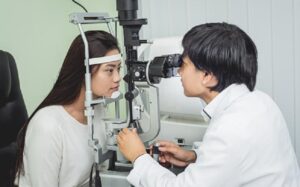
Bone health is usually ignored until it’s obvious. Older persons are more likely to have osteoporosis. This illness is sneaky, therefore early detection and treatment are critical. DEXA scans identify a silent bone weakener that changes osteoporosis therapy. DEXA measures disease progression and treatment effectiveness. DEXA scans help doctors and patients avoid bone breaking and treat osteoporosis. Do remember that after 50, women who have gone through menopause have high risk of osteoporosis.
What You Need to know about Osteoporosis:
Many have bad bones. They suffer from osteoporosis more than ever. It usually affects older people, especially women after menopause, although genetics, lifestyle, and medical conditions may also impact younger people. Time-related bone loss weakens bones, causing fracture, pain, and a worse quality of life. Known as a “silent disease,” osteoporosis progresses until it breaks. This stresses early diagnosis and treatment. Osteoporosis may impair movement, health, and finances. Osteoporosis fractures may lead to disability, job loss, and greater medical expenditures. Osteoporosis impacts healthcare and culture. Osteoporotic fractures cause medical expenditures, lost employment, and healthcare resource pressure. This disorder needs immediate diagnosis and treatment. DEXA scans may identify osteoporosis risk factors before fractures, preventing bone loss. DEXA scans may help clinicians switch from reactive to proactive medication, increasing osteoporosis patients’ results.

The Role of DEXA Scan:
DEXA scans are essential for Osteoporosis diagnosis. A non-invasive imaging approach measures spine, hip, and forearm bone mineral density (BMD) to determine bone health. Comparing BMD to standards helps clinicians detect fracture risk and halt osteoporosis.
Early Detection
DEXA scans may detect osteoporosis early, saving lives. DEXA scans may identify minor bone density changes better than X-rays. DEXA scans can guide osteoporosis treatment following diagnosis. DEXA scans let clinicians customize bone health and fracture risk treatments. DEXA scans and lifestyle adjustments like diet and weight-bearing exercises and medicines like bisphosphonates and hormone treatment regulate osteoporosis.
Proper Monitoring is Possible
Monitor bone density using DEXA scans to track disease progression and evaluate treatment. For optimum osteoporosis outcomes, physicians may monitor bone density changes and adjust medication. DEXA scans may assist clinicians identify individuals with quick bone loss or poor drug response who may require more aggressive treatment, improving osteoporosis management.
Benefits
DEXA scanning offers several benefits, however it has limitations including availability, cost, and interpretation standards. Improve healthcare infrastructure, improve awareness, and streamline payment processes to guarantee equitable bone density testing. Research is also improving current technologies and developing new bone health assessment techniques to increase diagnostic accuracy and modify treatments.
Conclusion:
Early osteoporosis detection, prevention, and management using the DEXA scan is promising. DEXA scans identify the silent bone strength killer, helping patients and doctors to prevent skeletal damage and enhance quality of life. As we age and seek holistic well-being, let us embrace DEXA scanning’s transformative potential to safeguard bone health for future generations.






